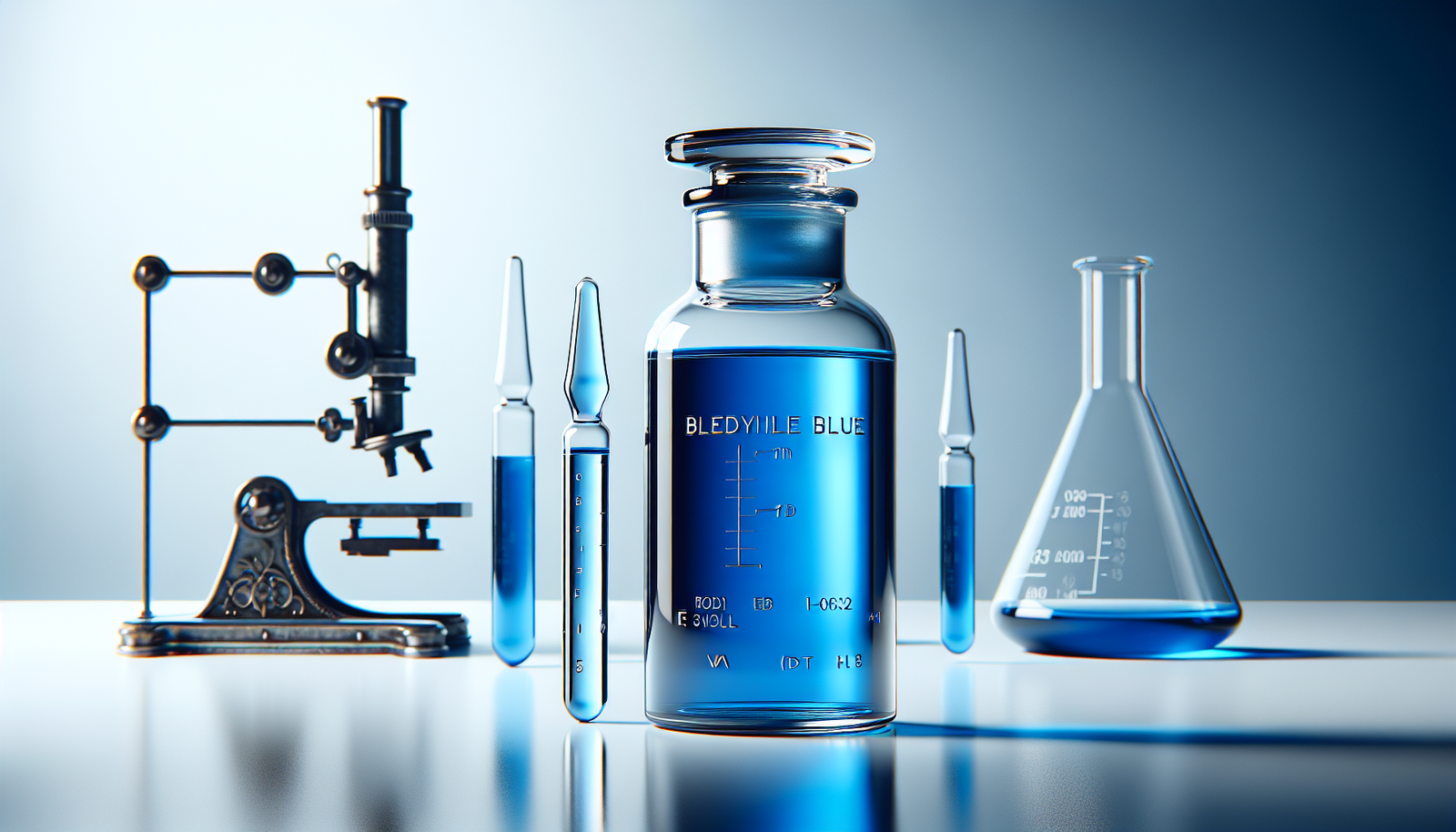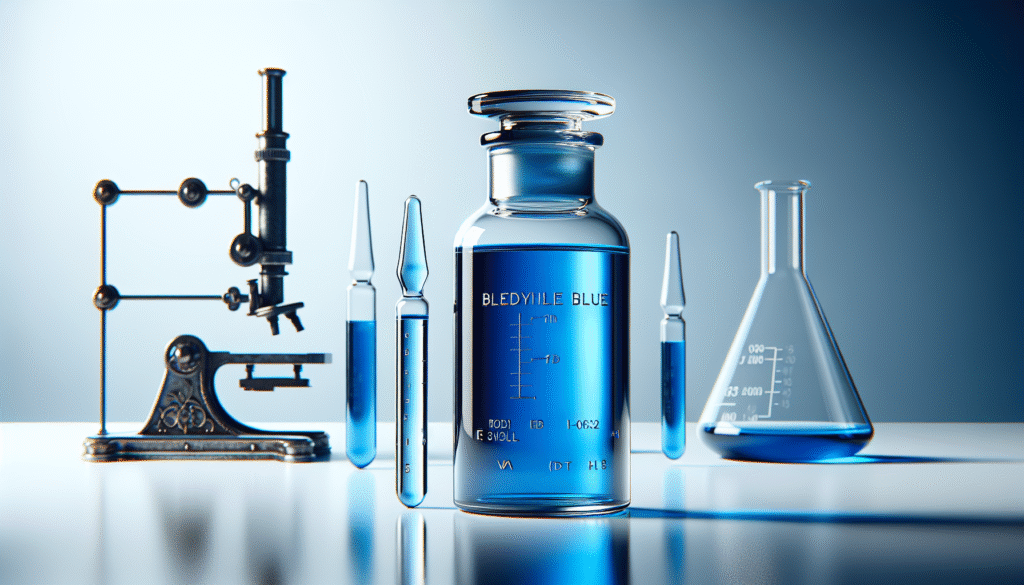
What if one dye could bridge the gap between historical intrigue and modern medical applications? Methylene Blue has a fascinating history and a range of uses that demonstrate its significance across various fields. This article will guide you through the extensive background, applications, and potential benefits of Methylene Blue, making it easier for you to understand its multifaceted role.
The Historical Context of Methylene Blue
The journey of Methylene Blue begins in the late 19th century, a time of scientific exploration and discovery. Introduced as a synthetic dye, it quickly found applications far beyond its initial intent. You might be surprised to learn that Methylene Blue was originally developed in 1876 by the German chemist Heinrich Caro.
The Development and Initial Uses
Methylene Blue was first used as a textile dye, favored for its vibrant blue color. Its stability and ability to penetrate fibers made it a preferred choice in the fashion industry. However, as you will see, this dye’s applications expanded significantly over the years.
Transition to Medical Use
The transition from textile to medicinal applications began shortly after its creation. In the early 20th century, Methylene Blue was recognized for its potential to treat malaria, earning it a place in the annals of medicinal chemistry. This was a significant breakthrough at a time when effective antimalarial treatments were scarce.
Applications of Methylene Blue
Understanding the diverse uses of Methylene Blue can provide insight into its value in both historical and contemporary contexts. Here, we will break down its applications into key areas for better clarity.
Medical Applications
One of the most prominent uses of Methylene Blue is in the medical field. Below are some of the primary medical applications:
| Application | Description |
|---|---|
| Antidote for Methemoglobinemia | Treats a condition where hemoglobin is unable to carry oxygen effectively. |
| Antimicrobial Agent | Utilized in certain infections, especially in wound care. |
| Diagnostic Tool | Used in certain diagnostic tests and procedures. |
| Exposure in Surgery | Sometimes used as a staining agent to visualize tissues during surgical procedures. |
Each of these applications showcases the versatility of Methylene Blue and highlights its continued importance in modern medicine.
Research and Experimental Uses
In recent years, Methylene Blue has garnered attention for its potential in research settings, particularly in neuroscience and biotechnology.
Neuroprotective Properties
Recent studies have indicated that Methylene Blue may possess neuroprotective properties. Research suggests that it can mitigate the effects of neurodegenerative conditions such as Alzheimer’s disease by enhancing mitochondrial function and reducing oxidative stress.
Photodynamic Therapy
Methylene Blue’s photodynamic capabilities make it a promising candidate for cancer treatment. When exposed to specific wavelengths of light, it can produce reactive oxygen species that selectively target and destroy cancerous cells. This innovative application illustrates the dye’s potential as a therapeutic agent.
Industrial Applications
The practical applications of Methylene Blue extend beyond medicine and research. In industrial settings, it finds relevance in various areas:
| Sector | Use |
|---|---|
| Textile Industry | Continues to be used as a dye for fabric and other materials. |
| Aquaculture | Serves as a dye in fish farming to treat fungal infections. |
| Paper and Plastic Production | Used in certain processes as a colorant. |
Understanding its role in these sectors not only highlights Methylene Blue’s utility but also illustrates its economic significance.

The Science Behind Methylene Blue
When investigating a chemical compound, it is important to explore its properties and mechanisms of action. Methylene Blue boasts a unique chemical structure that contributes to its varied applications.
Chemical Structure
Methylene Blue is an organic compound with the formula C16H18ClN3S. Its structure consists of a thiazine core, which endows it with its characteristic blue color. This structure also plays a key role in its ability to accept and donate electrons, which is essential for many of its biological interactions.
Mechanism of Action
Understanding how Methylene Blue interacts within biological systems can be somewhat complex. Below is a simplified overview of its primary mechanisms:
-
Electron Transfer: Methylene Blue can accept electrons from various substrates, which enables it to act as a reducing agent. This property is particularly valuable in treating conditions characterized by oxidative stress.
-
Inhibition of Aldose Reductase: Research shows that Methylene Blue inhibits the enzyme aldose reductase, which can play a role in conditions like diabetic complications.
Safety and Side Effects
When considering any medical application, safety is paramount. Methylene Blue is generally regarded as safe when used correctly, but it is important to remain aware of its potential side effects.
Common Side Effects
| Side Effect | Description |
|---|---|
| Allergic Reactions | Some individuals may experience itching or skin rashes upon contact. |
| Gastrointestinal Distress | Nausea and vomiting are possible, typically occurring during administration. |
| Urine Discoloration | Frequently, Methylene Blue can cause urine to turn a blue-green color. |
Contraindications
Certain populations should approach the use of Methylene Blue with caution. For instance, individuals with G6PD deficiency should avoid it due to the risk of hemolytic anemia. It is advisable to consult with a healthcare professional before using Methylene Blue, particularly for those with pre-existing health conditions or those taking medications.

Future Perspectives
As research continues to unveil the properties and applications of Methylene Blue, you may wonder what the future holds for this remarkable dye. The potential for innovative medical treatments and industrial uses suggests a promising outlook.
Ongoing Research
The scientific community remains focused on uncovering new applications for Methylene Blue. Studies are currently exploring its potential in areas such as:
- Cardiovascular Health: Investigating its role in improving blood flow and reducing blood pressure.
- Psychiatric Disorders: Exploring applications in treating mood disorders and cognitive decline.
Innovative Applications
As technology advances, there is great potential for Methylene Blue to be integrated into new therapeutic modalities and diagnostic tools. Its adaptability and established history position it as a promising candidate for future developments.
Conclusion
Methylene Blue stands as a testament to the intersection of historical significance and modern utility. From its origins as a synthetic dye to its diverse applications in medicine, research, and industry, the potential benefits it offers are vast.
Your understanding of Methylene Blue can contribute to informed discussions regarding its applications and implications in various fields. As research evolves, staying abreast of new findings will enhance your comprehension of this intriguing compound and its role in shaping both past and future innovations.
In summary, recognizing the history and potential uses of Methylene Blue allows for a more rounded appreciation of its impact across different spheres. Moving forward, it will be interesting to see how this dye continues to be utilized and understood within scientific and medical communities.